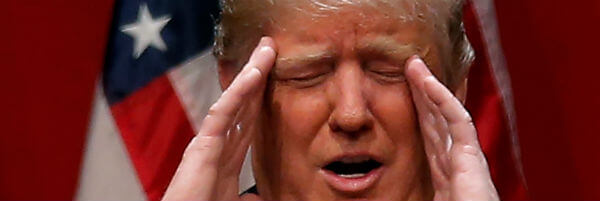Philip Bump writes: Russian President Vladimir Putin gave a speech Thursday in which he praised his country’s military operations on behalf of the government of Syria and made a case for how Russia could be stronger moving forward.
“We need to strengthen the military potential of strategic nuclear forces,” he said, according to an Agence France-Presse translation, “especially with missile complexes that can reliably penetrate any existing and prospective missile defense systems.” In other words, Russia needs to ensure that its arsenal of nuclear weapons can avoid interception by the enemy.
The primary enemy that might intercept those missiles is, of course, the United States and its allies in the North Atlantic Treaty Organization.
The language echoes old Cold War rhetoric: Our missiles must be able to serve as a deterrent to usage, by existing as a threat to enemies. If NATO and the United States felt confident that Russia’s incoming nuclear weapons could be stopped before reaching their targets, the weapons do not hold the same power for Russia.
You can’t have a new nuclear arms race, of course, without someone to run against. Enter President-elect Donald Trump.
The United States must greatly strengthen and expand its nuclear capability until such time as the world comes to its senses regarding nukes
— Donald J. Trump (@realDonaldTrump) December 22, 2016
On Wednesday, Trump tweeted about how he “met some really great Air Force GENERALS and Navy ADMIRALS,” a conversation during which the subject of nuclear weapons may have come up. It seems more likely, though, that Trump or someone on his team saw the Putin speech or was briefed on it, and Trump chose to respond with the comment above.The trend since the late 1980s has been in the opposite direction, winding down the stockpiles of weapons held by the United States and Russia. [Continue reading…]
The New York Times, reporting on Trump’s tweet noted: “He did not elaborate.”
Indeed, such is the nature of Trump’s statements on Twitter, or “Twitter posts” as the paper refers to them, unwilling, as yet, to introduce into its style guide the phrase “tweet.” Maybe for the Times only birds are allowed to tweet — but I digress.
The problem with reporting on the views of a president or president-elect when those views are expressed in throwaway remarks is that that’s exactly what they are: throwaway remarks that may get revised, reversed, or deleted within minutes.
Plus, just because it says @realDonaldTrump, how do we actually know these are Trump’s words? How do we know it isn’t Barron Trump playing with his dad’s phone — or Ivanka or any of an unknown number of people who might have access to Trump’s Twitter account?
Wouldn’t it be better if the media, with the lead let’s say of the New York Times and the Washington Post, started boycotting Trump’s tweets?
Treat his tweeting for what it is — idle chatter.
When he has something serious to say he should get expansive and craft it into several sentences, or even a paragraph or two. He could even hold a press conference or give a speech.
Just because Trump has chosen to bypass the press by using Twitter, the press isn’t obliged to facilitate that move by treating his tweets seriously.
The Daily Beast gets responses from a few experts who will definitely have informed responses if or when Trump actually has something to say on nuclear issues.
“We’re treating him like he’s a normal human being whose utterances have symbolic meaning, but I don’t know,” said Jeffrey Lewis, Director of the East Asia Nonproliferation Program at the Center for Nonproliferation Studies. “I don’t know that this is any particular window into his policy or future.”

